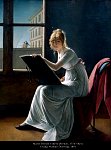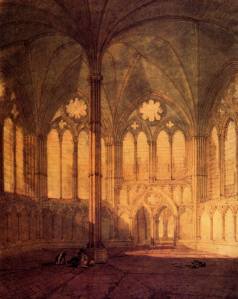‘Only–If there did happen to be a gentleman who–who wished to marry me, do you think he would be deterred by that, Freddy?’
‘Be a curst rum touch if he wasn’t,’ replied Freddy unequivocally.
‘Yes, but–If he had a partiality for me, and found I had become engaged to Another,’ said Kitty, drawing on a knowledge of life culled from the pages of such novels as graced Miss Fishguard’s bookshelf, ‘he might be wrought upon by jealousy.’
‘Who?’ demanded Freddy, out of his depth.
‘Anyone!’ said Kitty.
‘But there ain’t anyone!’ argued Freddy.
‘No,’ agreed Kitty, damped. ‘It was just a passing thought, and not of the least consequence! I shall seek a situation.’
‘No, you won’t,’ said Freddy, with unexpected firmness. ‘That’s what you said last night. Talked a lot of stuff about becoming a chambermaid. Well, you can’t, that’s all.’
‘Oh, no!’ she assured him. ‘Upon reflection, of course I perceived that wouldn’t answer. And also I shouldn’t wonder at it if Hugh was quite at fault, and I might do very well as a governess. To quite young children, you know, who don’t need instruction in Italian or Water-colour painting.’
‘Can’t do that either,’ said Freddy.
‘Well, really, Freddy!’ cried Miss Charing indignantly. ‘Pray, what concern is it of yours?’
‘Good God, Kit, of course it’s my concern!’ retorted Freddy, moved to express himself strongly. ‘You don’t suppose I’m going to have everyone saying you’d rather go for a governess than marry me, do you? Nice gudgeon I should look!’
— Cotillion, Georgette Heyer
No discussion of art during the Regency period can possibly omit the fine landscape painter J. M. W. Turner (1775 – 1851). I’ve posted an example of his work here on the subject of Crichton Castle in Scotland. His art, decidedly Romantic, elevated the medium of watercolor. Without it, one could argue the Impressionist movement would not have been possible. In any event, he brought about a decided preference for the liberating, poignant strokes of the finely executed watercolor.
It is no wonder that young ladies of the period, already steeped in gothic novels, should try to excel in this aspect of the fine arts. Indeed, in my earlier project, Notorious Vow, the heroine was rather self-conscious that the earl of Northam managed to catch a glimpse of some half-finished examples of her work in the medium. She could not be certain, but he appeared to be rather amused at the sight of her abandoned canvases stacked neatly in her mother’s conservatory, as if in silent witness to the artist’s lack of focus and direction. It was not quite the impression Vivien wanted to leave with the handsome earl.
Turner focussed strongly on emotional painting, using weather, fire, shipwrecks and other interactions with nature as primary subjects. He is often called the painter of light.
Indeed, he was reported to have declared on his deathbed that “the sun is God.”



What a delight your blog is! Thank you for sharing. I shall enjoy returning to read more of your posts.
LikeLike
I love Turner’s paintings. I was fortunate enought to view several of them when I lived in England.
LikeLike
Oh, I do as well! His emotional art must have seemed terribly unbridled at the time, but he was executing the style just when there was a rising need for such expression.
I wish I could live again for awhile in England. I just didn’t appreciate it enough when I was a student there.
LikeLike
HI, Gillian–thank you for your kind comment. I’m glad you enjoy the posts and look forward to hearing from you when you stop back by.
LikeLike
This is wonderful Angelyn! I especially love Turner’s Venice collection. The luminous effect in his hue choices for the sea and the warmth of his clouds are absolutely mesmerizing. I never heard his last words before reading your article. Very interesting.
-Kara
LikeLike
Thank you for commenting, Kara!
Water and light–what a marvelous combination for Turner’s abilities. If I had been smarter, I would have gone to the Tate to see that exhibition back when I visited England in 2004.
LikeLike